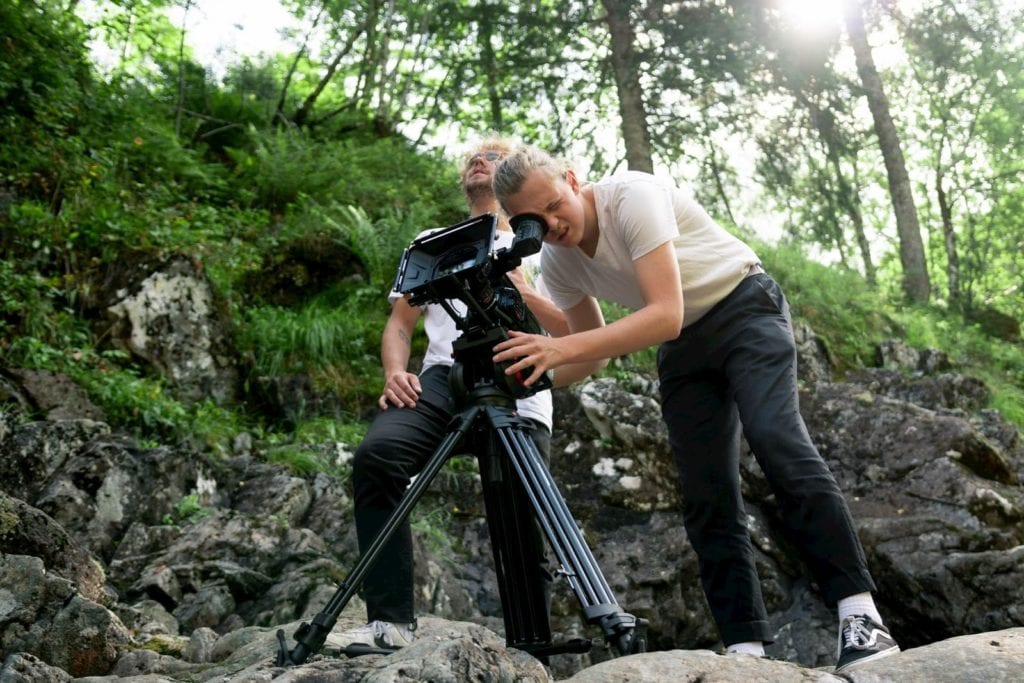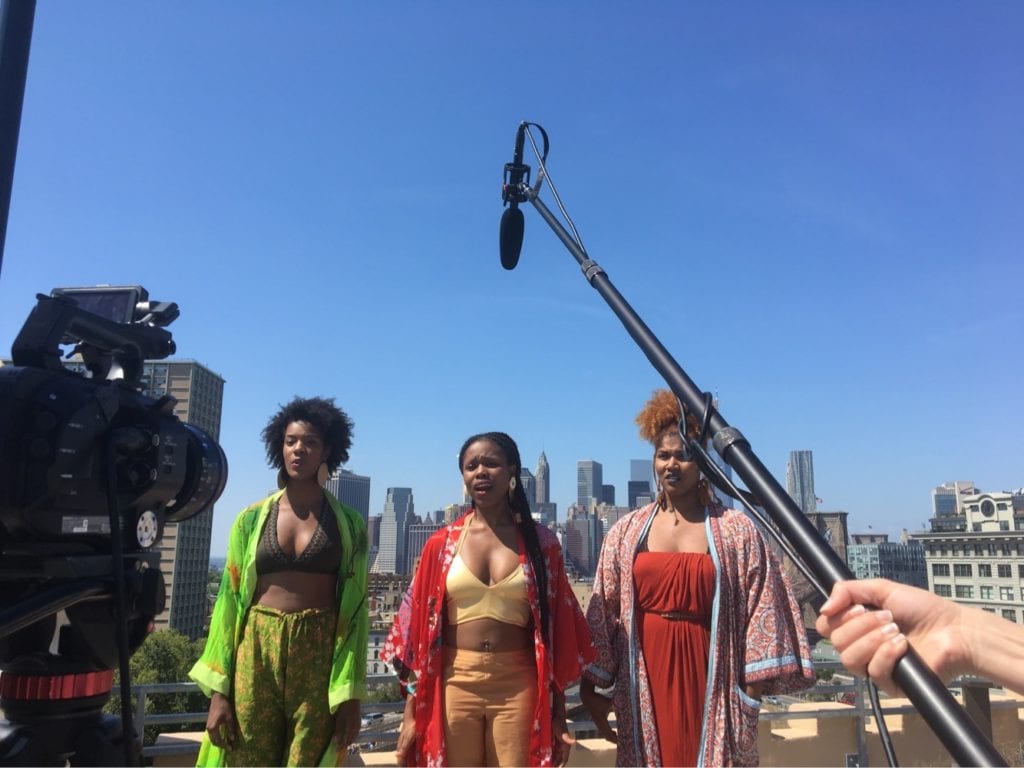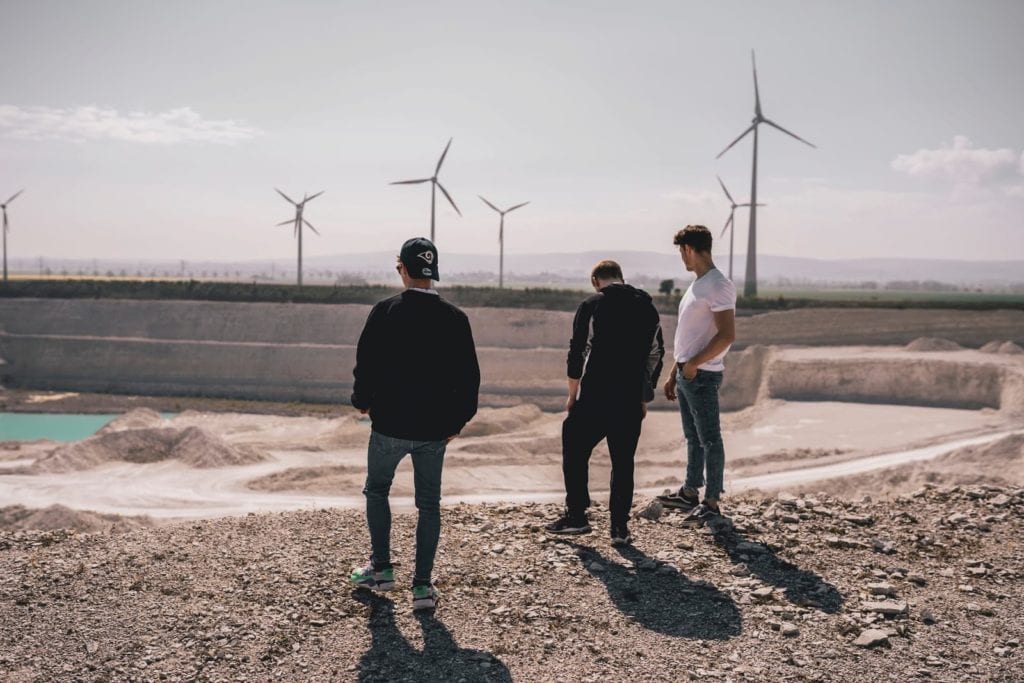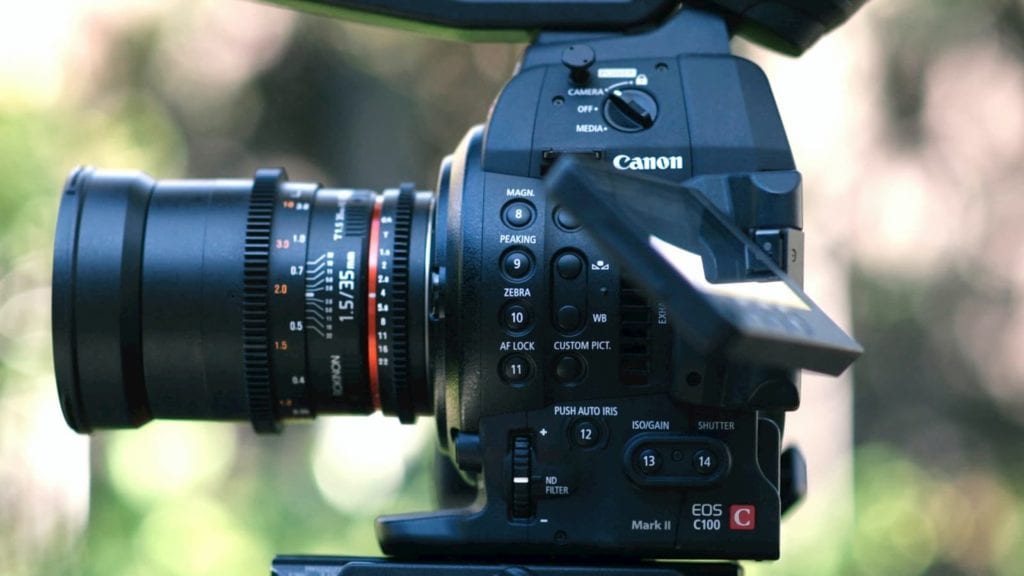Who You Need On Your Production Team
The film-making process is a machine with many running parts. If you want to successfully make a film, you will need a great film production team.
Organization is the key to success. If your crew is large enough, you’re going to want to split it up into departments. These different departments in film production will all work together, but have their own leaders that look over their operations and their own production team roles and responsibilities.
The main departments that you will have on your film production team are the key creative team (which you will be part of as the producer), the production department, the art department, the location department, the camera and lighting department, the sound department, and the post-production department.
Key Creative Team

The members of the key creative team are going to start their work well before the first shot is ever filmed.
Screenwriter
The screenwriter writes the script for your film, crafting the entire story: characters, dialogue, settings, and everything in between. Once shooting begins, there will inevitably be moments that don’t occur exactly as it was meant to according to the script. That’s natural. But still, every film needs a place to start, and the script is that place. Unlike the rest of your film production team, if the screenwriter doesn’t also hold other main roles in film production, he or she might not be very involved once shooting begins.
Director
Of course, in every film production team there is the director. Ultimately, it’s the director’s responsibility to create a vision for the film. The director oversees the film’s shooting and assembly, and oversees the different departments in film production to make sure the production team roles and responsibilities are being met.
Production Department

Production Manager
The production manager supervises the daily business side of film production. The main roles in film production for the production manager are to look over the film production team roles and responsibilities, to see that everyone stays on schedule and within the budget.
Production Assistant
The production assistant is responsible for managing all other tasks during film production. This includes transporting, setting up, and taking down film equipment. People just starting out in the film industry will likely start here.
Art Department

Film is a visual medium. From pre-production all the way through post-production, you’re going to have to make sure that your film has a clear visual theme. This theme will communicate just as much to the viewer about the mood of your film as dialogue and characters will. You also need to sell your story visually, especially if it has any surreal or fantastical elements. The art department has a crucial part in all of this.
Production Designer
The production designer takes the script and translates it into visual form.
One way this can be done is through a storyboard. A storyboard is a visual representation of how your film will turn out, almost like a comic strip. Not every film is storyboarded shot-by-shot from beginning to end. After all, storyboarding an entire film is a tedious process. Sometimes, the director will call for just a few scenes to be storyboarded, usually ones that may be expensive or difficult to shoot.
Writer and director Werner Herzog has said that “Storyboards are the instruments of the cowards.” On the other hand, Steven Spielberg has each shot in all of his films storyboarded. Clearly, filmmakers differ on the necessity of storyboards.
If you want to learn more about whether or not you should have a storyboard in your film, you can read The Film Fund’s article about that topic here.
Still, the production designer has many other main roles in film production. The production designer works with the director on deciding whether your film should be shot on location or on sets, what the visual theme of your film will be, and whether to use practical effects or digital effects. The production designer works closely with the art director.
Art Director
The art director makes your film believable and makes the production designer’s storyboards into reality. He or she acquires props, decorates sets, and decides on the buildings, landscapes and interiors where your film can take place.
If your film is set in a unique place or during any distant time period, the art director ensures the accuracy of everything that is to appear in each scene.
Location Department

If you’re filming in public places or renting out sets or establishments, you will need some sort of location department on your film production team.
Location Manager
The location manager has the job of finding locations to be used for the production. The location manager also must coordinate the logistics, permits and costs involved once the location is secured.
Location Assistant
The location assistant helps the location manager with his or her duties, and must maintain the cleanliness of the location during filming and deal with any issues that may arise from people in the community.
Camera and Lighting Department

Martin Scorcese once said that “cinema is a matter of what’s in the frame and what’s out.” Of the different departments in film production, it’s the members of the camera and lighting department that have the main roles in film production for determining what’s in and out of the frame.
Director of Photography
The director of photography is also known as the cinematographer. This person captures the video and is responsible for framing shots and using appropriate lenses.
Assistant Cameraman
The assistant cameraman, or the AC, assists the camera operator. This usually entails sitting next to the camera during filming and operating the lens’s focusing ring, as well as maintaining and organizing all camera equipment and accessories on set.
Gaffer
The gaffer, or chief lighting technician, is the main person responsible for setting up the lighting in your film.
Best Boy
The best boy assists the gaffer with the lighting plan for your production.
Key Grip
The key grip is the head of set operations. He or she works with the director of photography and other members of your film production team to set up correct lighting and positioning of cameras.
Sound Department
Sound is an invisible artform. When it’s done well, people barely notice. But when it’s done poorly, the only thing the viewers can think about is the poor audio. This is why a sound department is a necessary part of your film production team.
Sound Recordist
The sound recordist, or the production sound mixer, will gather all the necessary microphones and audio equipment for your film.
Boom Operator
The boom operator is responsible for the placement and movement of the boom microphone during filming. This is accomplished by using a boom pole that can position the microphone just outside of the camera’s frame during scenes.
Other Departments and Positions
Costume Department
A costume department is not always a necessary part of your film production team. But if your film is set in a distinct time or place, or the characters’ clothes convey a great deal about them, then you will probably want a costume designer. Another possible position that you may use if you end up having a costume department is a costume supervisor. The costume supervisor oversees construction or sourcing of garments, budgets and paperwork.
Hair and Make-up Department
Just like with the costume department, the hair and make-up department is not the most necessary of the different departments in film production.
But if your film depends on good hair and makeup, you will want to hire a key hairdresser and a key make-up artist for your film production team.
The key hairdresser answers directly to the director and production designer, and designs and styles the hair of the actors.
The key make-up artist plans make-up designs for the entire cast, and also answers directly to the director and production designer.
Actors
Finding the right actors to bring your characters to life is a crucial element to making a great film.
The director will often work with the actors on your film production team to make sure that they are bringing the necessary emotions to their performances in a scene.
There are many ways to find actors. If you don’t know any actors, Backstage.com is a popular talent database that you can get for six months free. Other websites at your disposal are Star Now and Mandy. You could also reach out to Facebook groups.
Post-Production Department
Of the different departments in film production, this one is the least like a cohesive department, and more just a grouping of those whose work comes into play after filming is done. Still, their production team roles and responsibilities are important.
Editor
Once your entire film has been shot, you will have a ton of excess footage. It is the job of the editor to go through it all, choose the ideal shots, and combine all of them into one continuous film. Then, audio and visual elements can be manipulated within the editing software platform of choice (Adobe Premiere Pro, Final Cut Pro, and Avid are popular options).
Music Supervisor
If the music in your film is not original or unlicensed, it’s the job of the music supervisor to obtain or negotiate the rights for all music.
Conclusion
Finding people to fill all of these roles in your film production team may be a challenge if you don’t know that many fellow filmmakers. You may have to run ads online or post on crew websites. If you don’t want to spend money just to find members of your film production team, you could also reach out to local film clubs, class, and other organizations on social media.
Some of these main roles in film production will probably be filled by the same person. For example, it’s not at all uncommon on your film production team for one person to be both the screenwriter and the director, or the production designer and the art director. Some roles won’t even be filled at all if they aren’t needed for your particular project. What’s important is that most of these film production team roles and responsibilities are filled in some way or another.
If you need money to hire members of your film production team, check out our funding opportunities for the chance to receive up to $10,000.